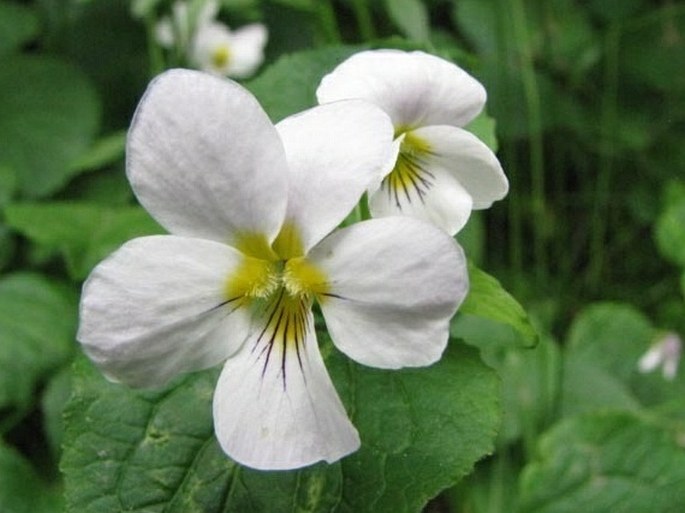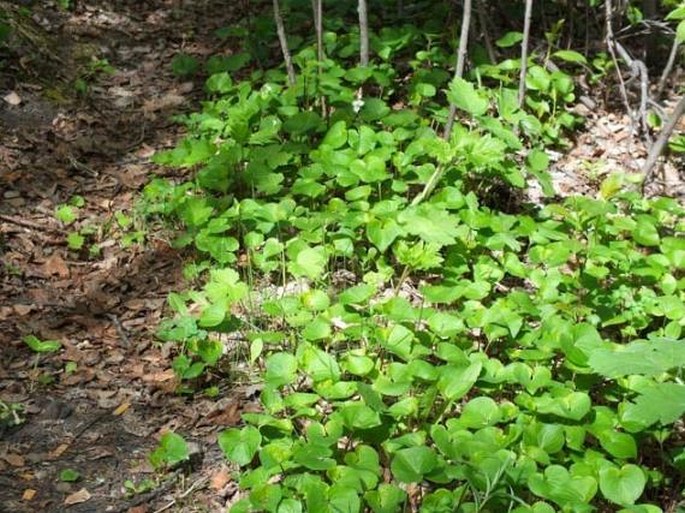Syn.: Lophion canadense (L.) Spach, Lophion rydbergii (Greene) Nieuwl. et Lunell, Viola geminiflora Greene, Viola muriculata Greene, Viola neomexicana Greene, Viola rydbergii Greene
Family: Violaceae Batsch

Distribution: North American species occurring in the most of the continent, from Alaska southward to Mexican state of Chihuahua. Absent in Newfoundland and Labrador, Nunavut, California, Nevada, Texas, Oklahoma, Kansas, Arkansas, Alabama, Louisiana and Florida. Divided into four varieties: nominate variety in the east, V. c. var. rugulosa in the west, V. c. var. scariosa in Arizona and V. c. var. scopulorum in New Mexico and Colorado. This species had been recorded in 1948 in that time Czechoslovakia, in Prague, on the dominant hill called Petřín. It is assumed that these plants were either escapees from culture or deliberately planted.
Ecology: Moist woods, margins of woods, moisture retaining places; mostly in shade but also in the open. Primary flowers from May to August.

Description: Perennial herb, 15–30 cm tall, from a short rhizome with fibrous roots, forming clumps, spreading by stolons. Stems hairless or with a few scattered hairs, green, often tinged purple. Leaves alternate, basal leaves with longer petioles than stem leaves, leaves mostly heart-shaped, 5–10 cm long, 7.5 cm wide, edges scalloped or shallowly toothed, sharply pointed tips, stem leaves more elongated than basal ones, fine hairs on leaf edges and along major veins on the underside. Single flowers on hairless pedicels, from leaf axils; flowers pentamerous, about 2.5 cm across, calyx green, trumpet-shaped, sepals sharply acuminate; petals white, sometimes tinged purple, yellow at base, dark purple lines on 3 lower petals, side petals bearded with tufts of short hairs, backs of petals purple. Fruit is a capsule, oval, 15 mm long, brown, covered with short hairs, splits in 3 sections with numerous seeds.
Threat and protection: State of Connecticut lists this species as threatened, Illinois, Maine, New Jersey and Rhode Island as endangered.
Note: As most violets, besides the showy white flowers of the blooming seasons, it produces inconspicuous cleistogamous flowers at the base of the plant, which do not open and are self-fertile, to ensure its survival. The seeds from these flowers just drop at the base of the plant instead of explosive dispersal of the regular seed capsules.



These images were taken in Canada, Alberta, Calgary, Edworthy Park (June 2013).


